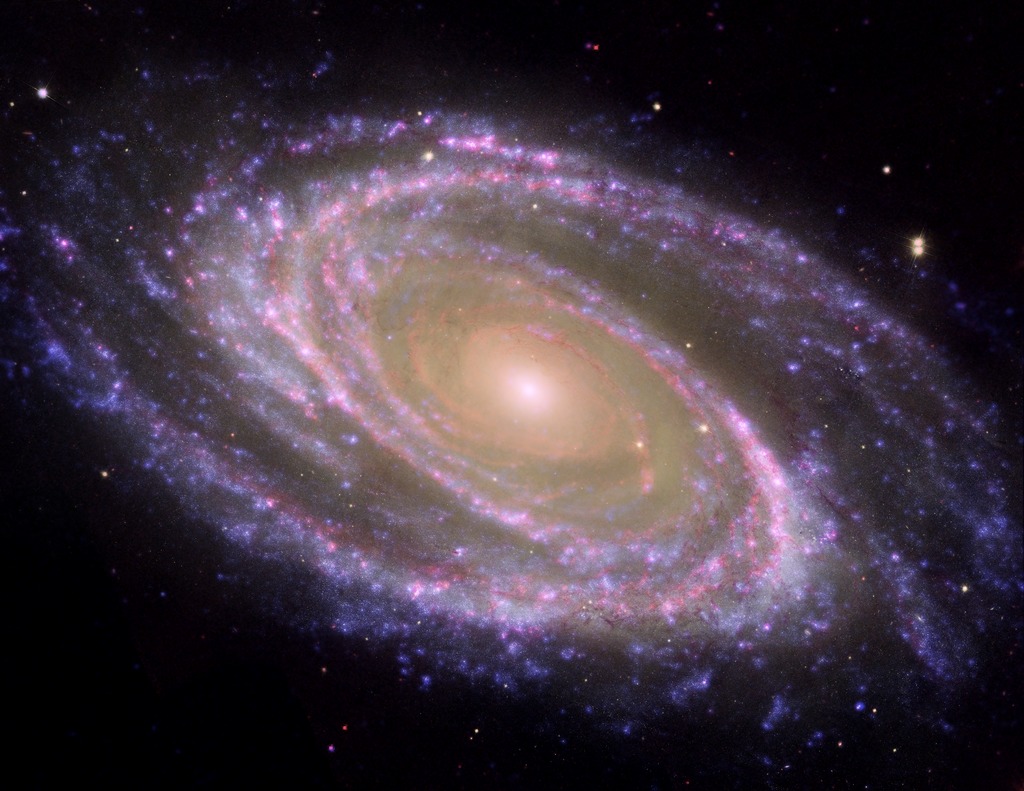
Credit: Hubble data: NASA, ESA, and A. Zezas (Harvard-Smithsonian Center for Astrophysics); GALEX data: NASA, JPL-Caltech, GALEX Team, J. Huchra et al. (Harvard-Smithsonian Center for Astrophysics); Spitzer data: NASA/JPL/Caltech/S. Willner (Harvard-Smithsonian Center for Astrophysics)
Observation • May 30th, 2007 • sig07-009
sig07-009
This beautiful galaxy is tilted at an oblique angle on to our line of sight, giving a "birds-eye view" of the spiral structure. The galaxy is similar to our Milky Way, but our favorable view provides a better picture of the typical architecture of spiral galaxies.
M81 may be undergoing a surge of star formation along the spiral arms due to a close encounter it may have had with its nearby spiral galaxy NGC 3077 and a nearby starburst galaxy (M82) about 300 million years ago.
M81 is one of the brightest galaxies that can be seen from the Earth. It is high in the northern sky in the circumpolar constellation Ursa Major, the Great Bear. At an apparent magnitude of 6.8 it is just at the limit of naked-eye visibility. The galaxy's angular size is about the same as that of the Full Moon.
This image combines data from the Hubble Space Telescope, the Spitzer Space Telescope, and the Galaxy Evolution Explorer (GALEX) missions. The GALEX ultraviolet data were from the far-UV portion of the spectrum (135 to 175 nanometers). The Spitzer infrared data were taken with the IRAC channel 4 detector (8 microns). The Hubble data were taken at the blue portion of the spectrum.
About the Object
- Name
- Bode's Galaxy • Messier 81 • M81 • NGC 3031
- Type
- Galaxy > Type > Spiral
- Distance
- 11,600,000 Light Years
Color Mapping
| Band | Wavelength | Telescope |
| UV | 150 nm | GALEX FUV |
| Optical | 440 nm | Hubble ACS |
| Infrared | 8.0 µm | Spitzer IRAC |
Astrometrics
- Position ()
- RA =9h 56m 43.3s
- Dec = 69° 3' 50.5"
- Field of View
- 19.8 x 15.3 arcminutes
- Orientation
- North is 89.5° left of vertical



